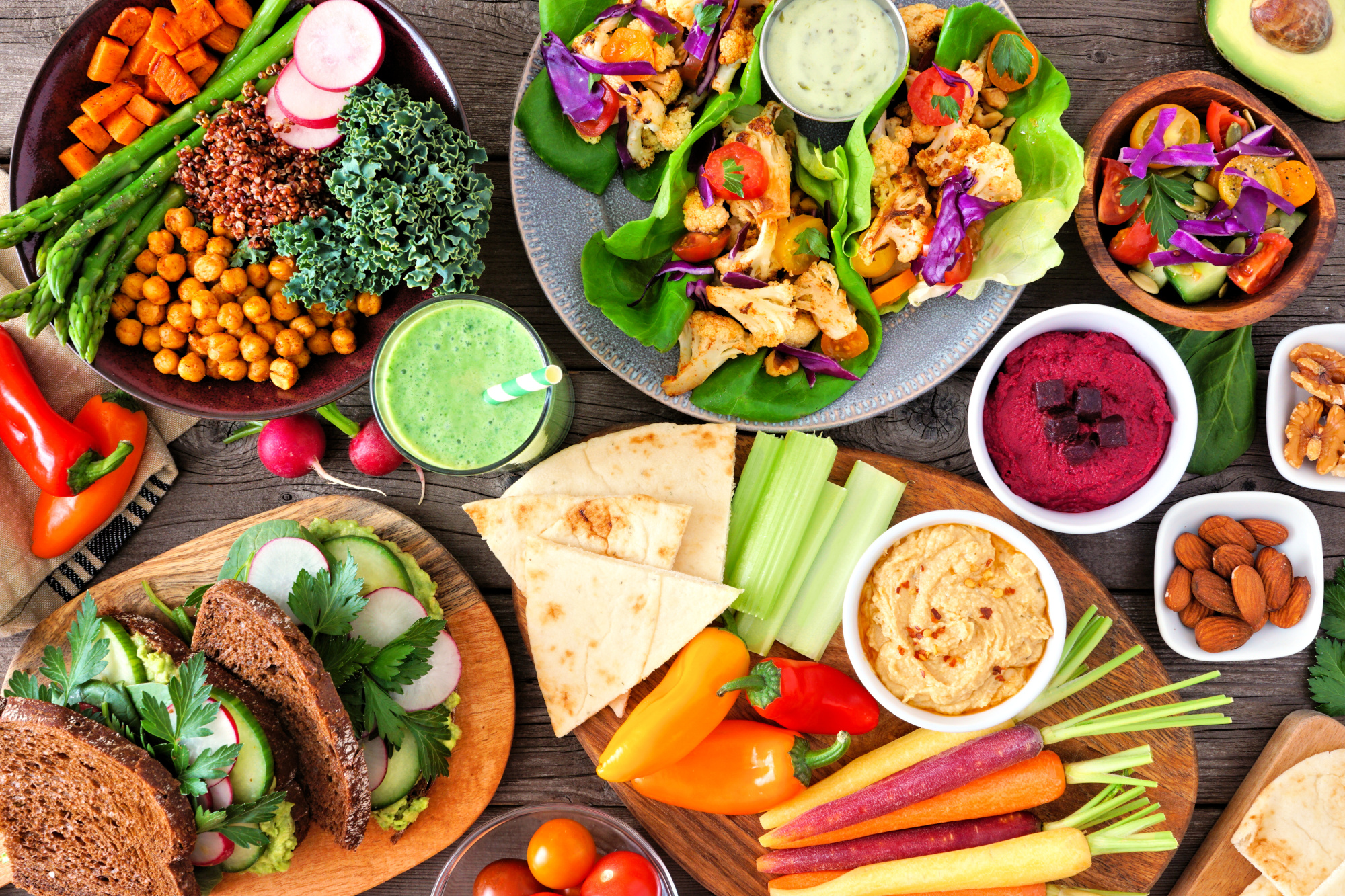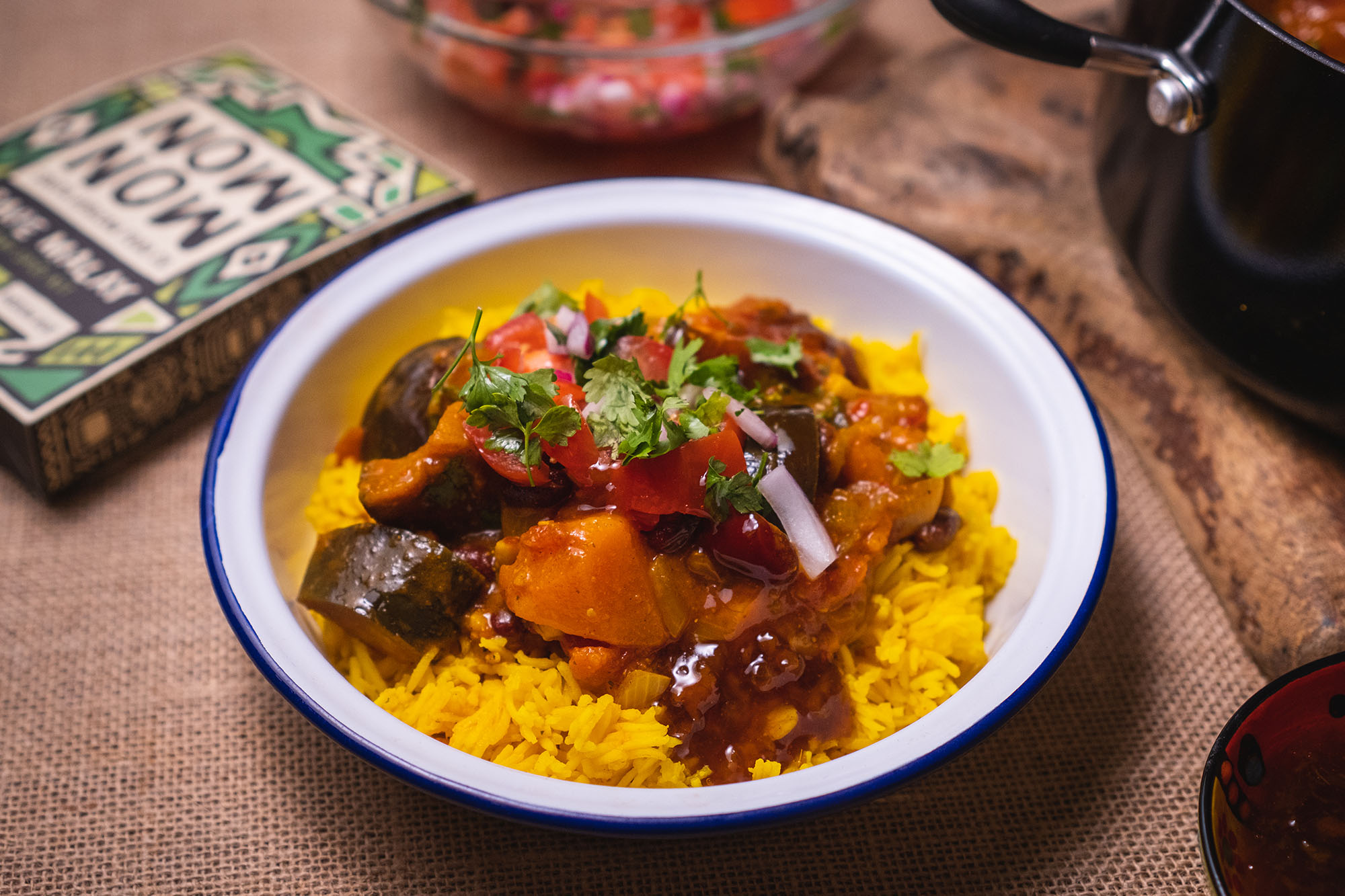Executive Summary
Flexitarians are by far the biggest target segment for plant-based products, and they want convenience. To appeal to them, your product should:
- Mimic traditional products that the consumer is familiar with (e.g. scrambled tofu instead of eggs, ‘no-chicken’ pieces instead of chicken).
- Use cooking methods that match the preparation of the conventional product.
- Use portion sizes tailored to your target segment (e.g. ready meals are usually bought by homes with two people, while whole-cuts are bought by larger families).
- Provide recipe ideas that appeal to flexitarians (emphasising ease).
- Use packaging that includes a serving suggestion and hints at traditional values.
Implementing these strategies will help you to maximise your product’s appeal among mainstream consumers. The benefits of convenience-by-design include:
- Converting mass-market consumers (i.e. not just the 4% who are vegan but also the 30% who are flexitarian).
- Higher customer retention rates (no more 30-90% avoidance rates following bad experiences!).
- Lateral sales – as flexitarians adopt new habits and plant-based tastes, they increase their purchases in similar categories.
Introduction
Convenience is a primary driver of consumer behaviour.1 A Harvard study found that the easier it is for consumers to make an informed decision, the more likely they are to try, repeatedly buy, and recommend a given product. In other words, convenience is big business.2
“What consumers want… is simplicity.”
Speaking of consumers, flexitarians are the biggest market for plant-based products (accounting for 70% of sales in some categorie4, and 30% of overall shoppers5).
By optimising your plant-based products for convenience, and targeting flexitarian consumers, you can maximise your market potential. In this concise guide you’ll discover:
- The power of convenience.
- How to signal convenience to consumers and increase sales.
- Brand strategies you can emulate to reach flexitarian consumers.
Register for our free webinar about convenience
In this 45 minute webinar, you’ll get to hear advice from our expert panellists. You’ll be able to broaden your plant-based consumer base by designing your next product with convenience at the core – while enhancing the convenience and appeal of your existing range.
Why does convenience matter?
“Shoppers are time-poor and low on bandwidth – in other words, their shopping habits are based on habit and expedience. They don’t try new aisles, they grab what they know and go.”
Convenience is one of the top three consumer priorities (alongside taste and price).67 Because modern consumers are time poor,8 85% of them want food products that are easy to prepare and which fit their existing cooking routines.9
“In today’s world, time is a premium ingredient.”
Consumers don’t want to have to learn new skills just to cook plant-based products.11 They crave familiarity – both in terms of taste and the cooking experience. Time-poor flexitarians want direct replacements for conventional animal products,12 hence the boom in plant-based milks and meats – with almost 40% of US consumers using plant milk at home and around 20% choosing plant-based meat.13
But the preparation methods aren’t always the same for plant-based products as they are for animal-based options. For example, misunderstandings can result in overcooking which can lead to a disappointing culinary experience and future avoidance of the product – 33% of consumers say that they would avoid a brand after just one negative experience.14 In order to encourage consumer adoption, a product’s packaging must therefore convey key information that builds convenience into the overall consumer experience.
“When motivation to change our diets is low, small hassles and inconveniences become disproportionately impactful. Substituting sustainable food choices into our diets must therefore be easy, both practically (availability and convenience) and psychologically (know-how, willpower, and habit).”
This desire for convenience is reflected in consumer behaviour, although there are also other factors at play. For example, during the pandemic, shopping habits shifted from a preference for ready-meals towards an interest in meal kits, as more consumers prioritised freshness and avoided pre-processing. Indeed, 70% of consumers are keen to continue cooking from home into the future.16
“‘Easy to make’ became ‘easy to make from scratch’.”
The good news is that food manufacturers can utilise this consumer desire for ease. By nailing the convenience aspect of your plant-based products, you can unlock access to the mass market of flexitarian consumers. It’s the best way to serve your customers:
“Manufacturers should find ways to provide consumers with healthy eating habits without compromising convenience.”
Section summary:
- Consumers are time-poor and want convenience.
- Meal kits are trending upwards, alongside ready meals.
- Negative experiences deter consumers.
- Convenience removes barriers and makes plant-based food accessible to flexitarians.

ProVeg Tips
Are you planning to launch a new product or reformulate an existing one? Take advantage of our quick Taste & Texture evaluation service. Send us a product sample and our team of more than 20 plant-based experts will complete a taste, texture, and appearance evaluation. Together, we’ve tasted hundreds of products and provided comprehensive feedback. ProVeg will design a customised survey and summarise key findings and recommendations to give you greater confidence in taking the next step to refining your product and taking it to market. Find out more about our Test Community for Businesses.
As one senior manager at ABP put it in an interview with ProVeg, food producers and retailers have to understand that, for consumers, “convenience and branding is key – clear portion sizes, clear cooking instructions.”
So how do you deliver convenience for consumers? Let’s find out.
Convenience by design
1. Easy browsing: front-of-pack label
European supermarket customers spend an average of 35 seconds looking at a new product’s labelling and packaging before making a decision.19
Let’s assume your packaging is already promoting taste and that it’s the reason people are picking up your product to inspect closer. You have 30 seconds to persuade the consumer that your plant-based product meets their need for convenience. Most people won’t look at the back of a packet unless they’re convinced by the front, so let’s nail the front first.
Pop quiz time! Which of the following should feature on your front label?:
- (A) A strapline signalling the product’s purpose (e.g. fry me, scramble me, drizzle me).
- (B) A cooking time icon (e.g. oven-ready in 20 minutes).
- (C) A serving suggestion (e.g. a photo, illustration, or call-out text).
And the answer is… (D) all of the above!
“A strapline, cooking time, and a serving suggestion on the front are the three best ways to quickly appeal to consumers and entice them with the convenience of your plant-based product.”
So, let’s say your product’s front-of-pack design now fits the bill. The consumer is standing in the supermarket, holding your product for the first time, and they’re semi-convinced that it’s tasty and easy to make. But are they ready to buy? Not yet – they want confirmation of the facts promised by the front of pack! They’re turning it over and scouring the back-of-pack label…Is it all too good to be true? Quick – you’ve only got 20 seconds left to convince them beyond doubt that it’s even better than they hoped! Time to nail the preparation and ingredient details.
2. Easy preparation: Back Label
Not knowing how to use a product leads consumers to avoid it.20 Your back-of-pack design needs to sell an easy experience that fits with a consumer’s usual routine.
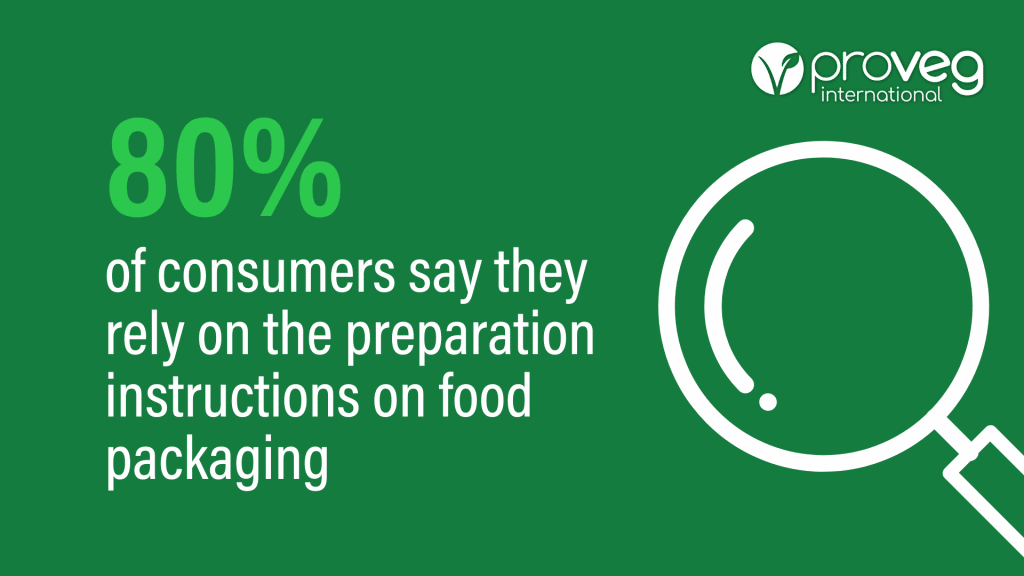
Wherever possible, you want to mirror the preparation methods of the conventional version of your plant-based product. Familiarity is a big part of perceived convenience, and positively impacts a consumer’s attitude towards a product.2223
“For flexitarians or people who are not yet familiar with vegetarian products, the change/choice needs to be an easy one.”
Linda McCartney’s chicken roast does this well – by both emulating and simplifying a conventional roast: “Preheat oven to 190°C/Fan 170°C/Gas Mark 5. Place roast in its foil onto a preheated wire rack and cook in the centre of the oven for 1 hour and 10 minutes (45 minutes for fan oven). After cooking, leave to stand before running a knife around the edge of the roast and turning out onto a serving plate.”

The X-Prize ‘Feed the Next Billion’ competition is stimulating the development of whole-cut fish and chicken alternatives. They recognise that for alternative proteins to succeed in the mainstream they need to be cooked or prepared in a similar way to the conventional version – which is why familiar cooking methods are a key criterion for the competition. “The hope is that by removing the adjustments between traditional and innovative products, we can further decrease the barriers of entry,” explains MJ Kenny, X-Prize plant-protein expert.
For some products, conventional preparation may be detrimental. If so, it’s super important to clearly flag this on the packaging so that consumers avoid a negative experience.
“Beef burgers are great on the grill because this expedites fat loss, but most plant-based burgers taste best when cooked in some fat, such as avocado oil.”
This divergence from the norm is actually a great opportunity to once again sell convenience. By rather frying a plant-burger for three minutes on each side,consumers can get maximum taste for minimum prep time. That’s a win you can brag about!
Next, take your consumer on a delicious journey from pack to plate by giving them a simple recipe to use with your product. If you’re pushed for label space, use the side of the pack or offer a web link/QR code to your range of recipes.
It’s well-established that plant-based diets can provide all of the nutrients humans need to live healthily.25 However, it’s important that manufacturers make it easy for consumers to get a good nutritional balance through their plant-based choices. Design your recipes to incorporate the essential components of a balanced diet, and show how your product can be part of that mix.
5 Marketing fails to avoid with plant-based foods
Looking for more tips on health-based labelling and tackling deficiency concerns? Check out our article on marketing to flexitarians.
“Simplifying meal planning, by offering one-dish solutions that contain multiple plant-based foods such as cheeses, meats, and sauces, provides consumers better integration into their current lifestyle. This appeals to consumers’ focus on ease of use and convenience, by having a complete healthy meal crafted for them.”
Happily, for brands that do present their plant-based products as part of a nutritionally-balanced meal, there’s a ready-and-waiting flexitarian consumer base.
“Awareness of these foods’ benefits among meat-reducing consumers – and their appeal as convenient alternatives in familiar formats – is driving increased sales.”
3. Make the artwork familiar (bonus tip)
Most consumer behaviour is subconscious, which means your product’s packaging has to connect with the non-rational part of a shopper’s mind. To stand a chance of success, you need to “unlock the subconscious emotional content embedded in experience and memory”, according to consumer research agency Brand Trust.28 As Food Frontier puts it, “Consumers require alternatives to conventional meat that are convenient, familiar and accessible.”29 One way to achieve this is to make your plant-based packaging mimic the traditional animal product as closely as possible.30
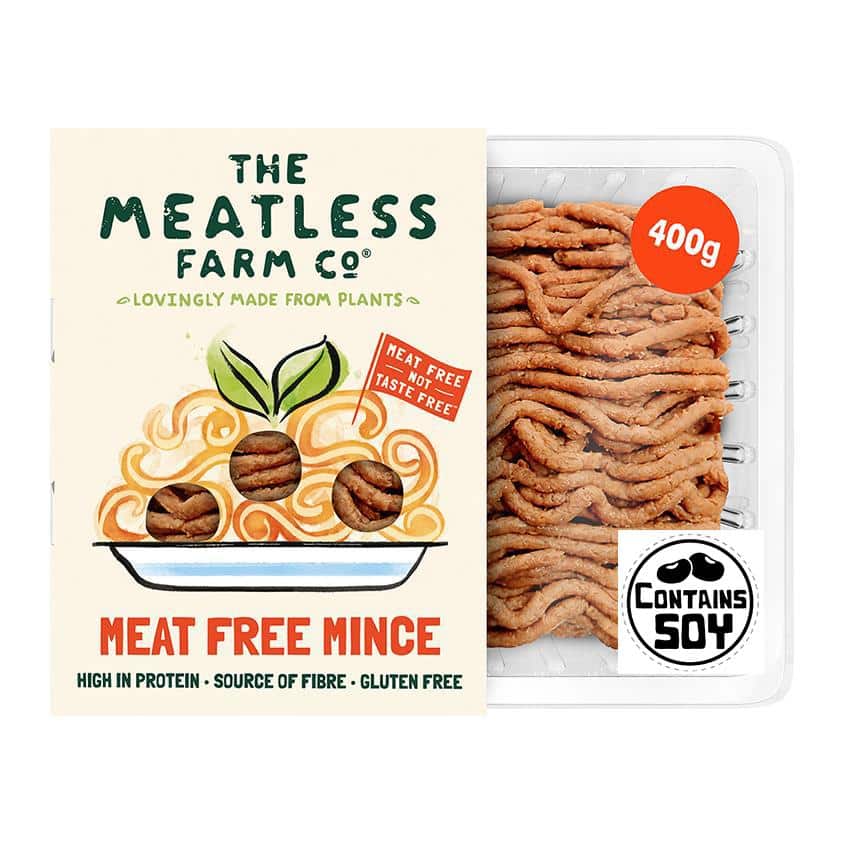

ProVeg Tips
If you’re looking to refine your products’ positioning, branding, and communications in order to meet the specific needs of your consumer segment, ProVeg has you covered. ProVeg has extensive knowledge of flexitarian consumers in Europe, from general preferences to specific consumer sentiments regarding particular product categories. Depending on your needs and interests, ProVeg conducts tailored quantitative and qualitative analysis in order to generate key insights and provide customised recommendations for your business. Tell us how we can help at [email protected].
Case Study: scrambling tofu to reach flexitarians
Non-vegans usually regard tofu as a niche product that requires specialist cooking knowledge. The Tofoo Co. wanted to make their product accessible to mainstream flexitarian customers. They knew that the best way to achieve this was to mimic something familiar to those consumers – in this instance, scrambled eggs.
Their scrambled tofu is presented as ready-to-cook with usage echoing that of conventional eggs – just toss them in a pan. The serving suggestion reinforces this convenience and familiarity, while also emphasising taste benefits. The core product – tofu – remains the same but is presented differently in order to reach mainstream consumers.
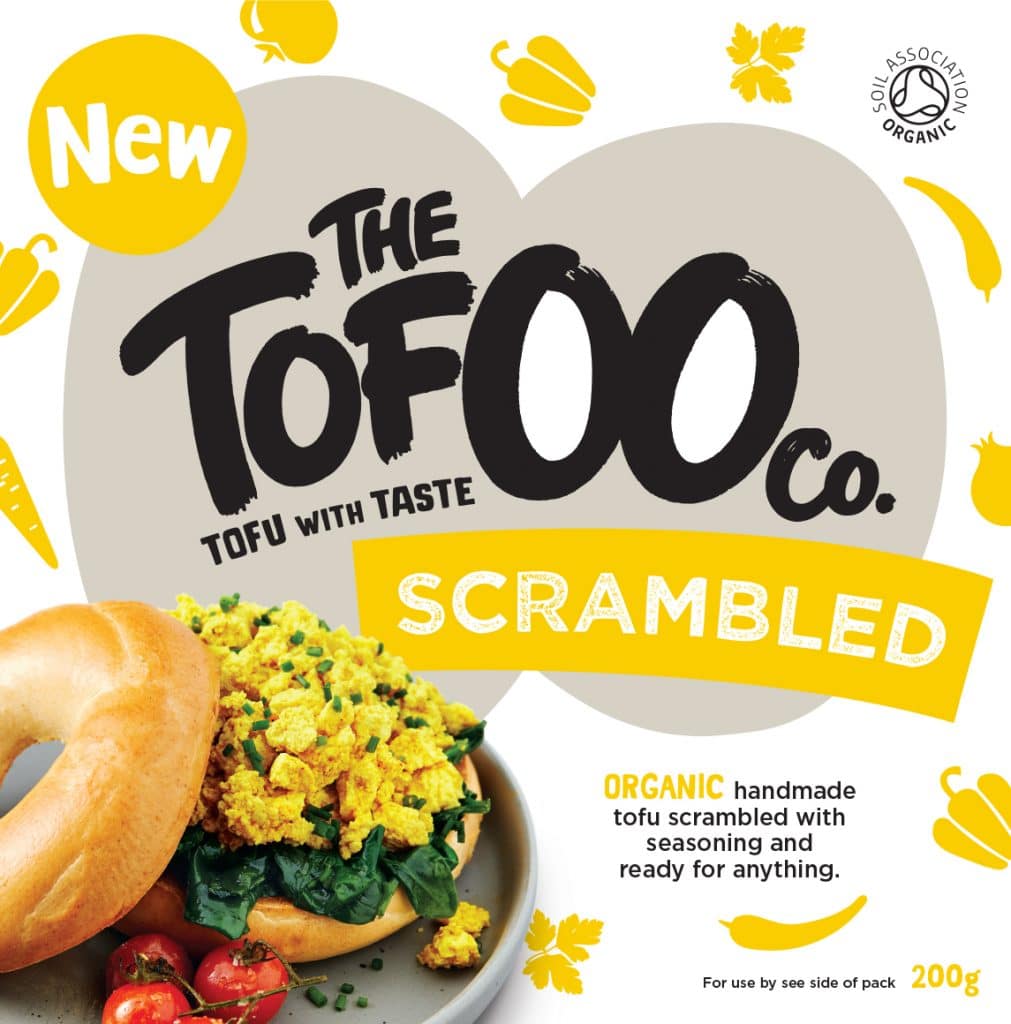
Non-vegans usually regard tofu as a niche product that requires specialist cooking knowledge. The Tofoo Co. wanted to make their product accessible to mainstream flexitarian customers. They knew that the best way to achieve this was to mimic something familiar to those consumers – in this instance, scrambled eggs.
Their scrambled tofu is presented as ready-to-cook with usage echoing that of conventional eggs – just toss them in a pan. The serving suggestion reinforces this convenience and familiarity, while also emphasising taste benefits. The core product – tofu – remains the same but is presented differently in order to reach mainstream consumers.
Best practice you can emulate from The Tofoo Co:
- Mimic a traditional product that flexitarians are familiar with.
- Use the same cooking method.
- Present it in ways that emphasise convenience, taste, and familiarity.
Case Study: ABP’s Dopsu range
Dopsu is the plant-based brand from animal-meat producer ABP. Their core range features six meat analogues. Dopsu believes it’s vital that their branding signals to the consumer that “this is as good as the [animal meat] equivalent” in terms of taste and texture. That’s why their new range includes the name of the item it’s replacing – to make it clear to the consumer they’re making a substitution not a compromise.
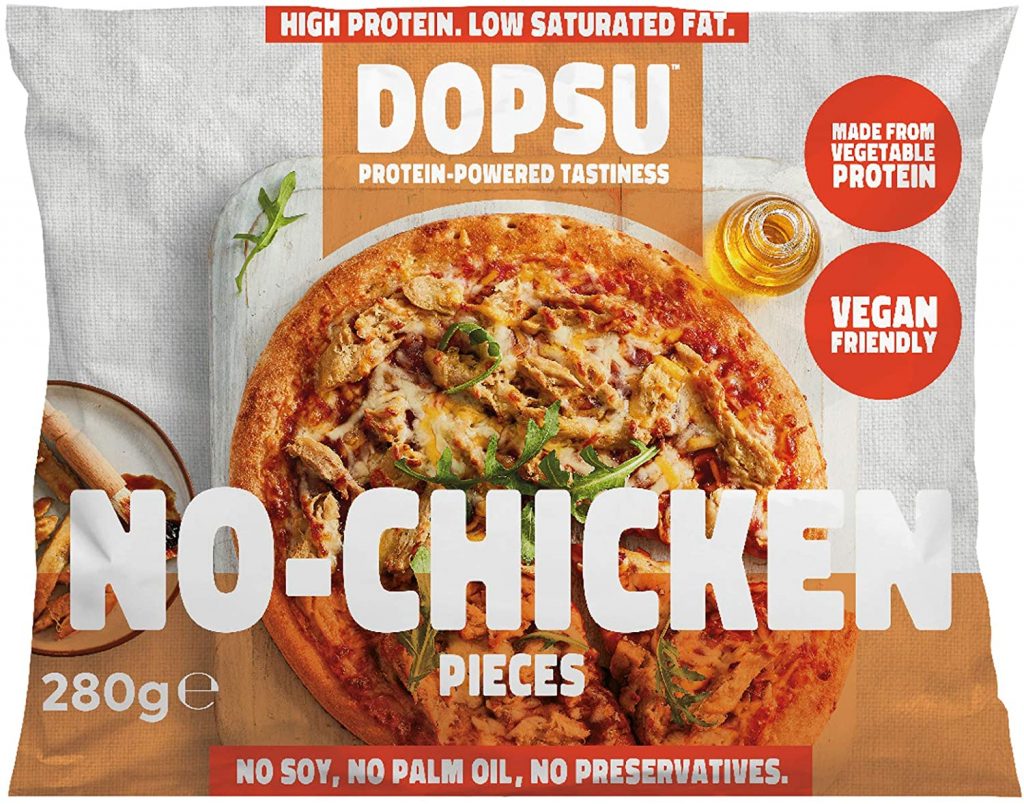
By nailing the branding and having a robust supply chain in place, in 2021 Dopsu were able to launch into three major UK retailers across all of their national stores. Their convenience-centric approach is all about making the switch easy for flexitarians.
“You’ve got to associate the plant-based version with the conventional product. Get the thing you want in a new way.”
This emphasis on ease and familiarity is continued across their recipes pages online:

Best practices you can emulate from Dopsu:
- Provide clear prep times and portion guidance on packaging and recipes.
- Mimic the conventional meat product.
- Present it in a familiar serving suggestion.
5 Marketing fails to avoid with plant-based foods
Have you got your convenience nailed? Great! Time to reach the flexitarian masses. Check out our expert guide on ‘5 Marketing fails to avoid with plant-based foods’ for a holistic run-down on essential merchandising tips for food manufacturers. If you’d like a few more pointers, check out our final case study and summary tips below.
Case Study: Marks & Spencer Plant Kitchen range
Marks & Spencer’s Plant Kitchen is a great example of own-label plant-based range that has convenience at its core.
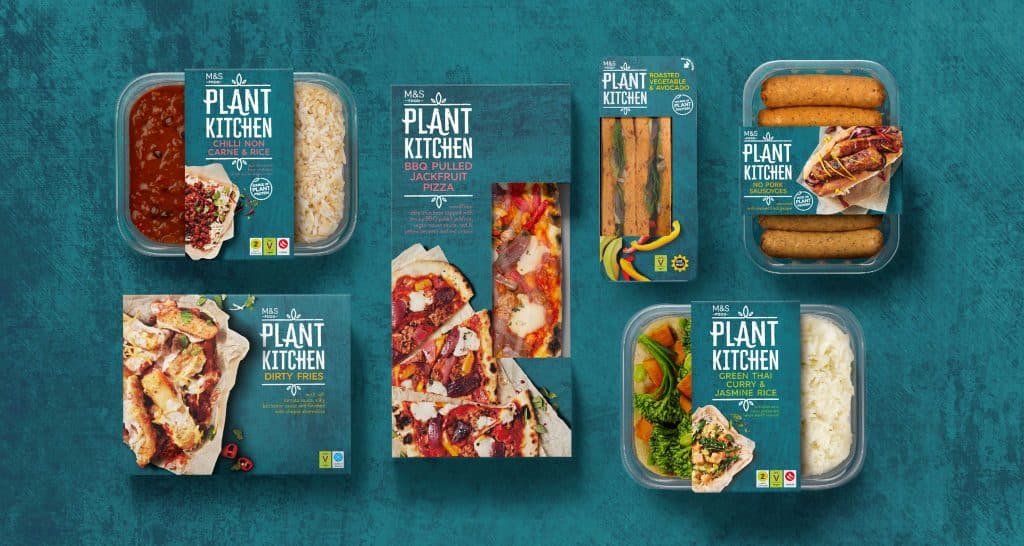
“The design for the Plant Kitchen range is deliberately informal and both the packaging design and recipes draw inspiration from street food and foodie festivals.”
By aligning the branding with tasty street food, they’re helping consumers to associate the new product with positive previous experiences. They combine this with clear portion sizes and serving suggestions, all reinforcing the indulgent taste characteristics that flexitarians want. The M&S range also caters to a range of convenience-centric categories – including meal deals, ready meals, and single-meat substitutes. Finally, the packaging includes a clear vegan label on the front, signalling it’s plant-based.
In order to provide maximum assurance to consumers, we recommend using the V-Label. It provides reliable in-store purchase guidance for consumers. Globally, more than 40,000 products from more than 3,500 licence holders now carry the V-Label, which is registered in 27 countries. With more than 25 years’experience labelling products and engaging experts in quality management, food technology, chemistry, cosmetology, and marketing, V-Label is the frontrunner of a global movement. Our V-Label team can help with your brand or product range in five easy steps. To get started, just register with us.
Conclusion
To create a convenient product that mainstream flexitarian consumers will love, you should imitate traditional products (so that you’re providing the consumer with familiarity as well as novelty), aim for cooking methods they’re used to, create recipes and portion sizes that suit your target consumer, and include serving suggestions on your packaging — along with a clear nod towards traditional values and brand imagery (again, leveraging familiarity).Developing and launching a plant-based product requires the perfect mix of preparation, innovation, hard work, and promotion. ProVeg can help you to succeed across the entire process of taking your product to market. Drop us a line at [email protected] to discuss your ambitions and needs.
References
- RethinkX (2019): Rethinking food and agriculture 2020-2030 Available at https://www.rethinkx.com/food-and-agriculture (last accessed 10.12.2021).
- Spenner, P and Freeman, K (2021):To keep your customers, keep it simple. Harvard Business Review.Available at https://hbr.org/2012/05/to-keep-your-customers-keep-it-simple (last accessed 06.12.2021).
- Spenner, P and Freeman, K (2021):To keep your customers, keep it simple. Harvard Business Review.Available at https://hbr.org/2012/05/to-keep-your-customers-keep-it-simple (last accessed 06.12.2021).
- ABP EatWell Research, interviewed by ProVeg, September 2021.
- Smart Protein Project (2021): What consumers want: A survey on European consumer attitudes towards plant-based foods. Country specific insights. European Union’s Horizon 2020 research and innovation programme (No 862957). Available at https://smartproteinproject.eu/consumer-attitudes-plant-based-food-report/ (last accessed 09.12.2021).
- Szejda, K and Parry, J (2020): Strategies to accelerate consumer adoption of plant-based meat. The Good Food Institute. Available at https://gfi.org/images/uploads/2020/03/FINAL-Consumer-Adoption-Strategic-Recommendations-Report.pdf (last accessed 09.12.2021).
- International Food Information Council (2020): 2020 food & health survey. Food Insights. Available at https://foodinsight.org/2020-food-and-health-survey/ (last accessed 12.10.2021).
- International Food Information Council Foundation (2018): 2018 food & health survey. Food Insights. Available at: https://foodinsight.org/wp-content/uploads/2018/05/2018-FHS-Report-FINAL.pdf (last accessed 18.10.2021).
- Mintel (2020) UK ready meals and ready-to-cook foods market report 2020. Cited from Eating Better (2021): Ready meals 2021 snapshot survey. Available ar https://www.eating-better.org/uploads/Documents/2021/EB-ready-meals-survey-FINALJune2021.pdf (last accessed 18.10.2021).
- Devenyns, J (2018): How manufacturers can serve the 77% of consumers who prefer home-cooked meals. FoodDive Available at https://www.fooddive.com/news/how-manufacturers-can-serve-the-77-of-consumers-who-prefer-home-cooked-mea/544147/ (last accessed 09.12.2021).
- Pasi, P; Vinnari, M and Pekka, J (2015): Consumers’ perceived barriers to following a plant-based diet. British Food Journal. 117 (4). DOI: 10.1108/BFJ-09-2013-0252. AVailable at https://www.researchgate.net/publication/260478794_Consumers%27_perceived_barriers_to_following_a_plant-based_diet (last accessed 09.12.2021).
- Job, K; Kalocsay, K; King, T; Lawrence, S and Weber, J (2021): 2020 state of the industry: Australia’s plant-based meat sector. Melbourne: Food Frontier. Available at https://www.foodfrontier.org/wp-content/uploads/dlm_uploads/2021/03/Food-Frontier-2020-State-of-the-Industry.pdf (last accessed 09.12.2021).
- Good Food Institute (n.y.):: Plant-based food retail sales grow 27 percent to reach $7 billion in 2020. Available at https://gfi.org/press/plant-based-food-retail-sales-grow-27-percent-to-reach-7-billion-in-2020/ (last accessed 09.12.2021).
- Glenday, J (2020): 1 in 3 customers would ditch brand after just one bad experience. THe Drum. Available at https://www.thedrum.com/news/2020/10/14/1-3-customers-would-ditch-brand-after-just-one-bad-experience (last accessed 18.10.2021).
- The Behavioural Insights Team (n.y.): A menu for change – using behavioural science to promote plant-sustainable diets around the world (executive summary). Available at https://www.bi.team/wp-content/uploads/2020/01/A-Menu-for-Change-Exec-Summary-Webversion.pdf (last accessed 12.10.2021).
- Hunter study. Cited from Devenyns, J (2021): Survey: 7 in 10 consumers say they will keep cooking at home after the pandemic. Food Dive. Available at https://www.fooddive.com/news/survey-7-in-10-consumers-say-they-will-keep-cooking-at-home-after-the-pand/593532/ (last accessed 18.10.2021).
- Mintel (2020): How covid-19 disrupted food and drink priorities. Available at https://www.mintel.com/events/how-covid-19-disrupted-food-and-drink-priorities (last accessed 12.10.2021).
- Future Market Insights (2020): Plant-based snacks market by source (meat alternative snacks, cereal/ grain based snacks, plant-based salted snacks), nature (organic, conventional), format (savoury, sweet), packaging (pouches, wrappers, bags, tins), sales channel (food service provider, hypermarket/ supermarkets, convenience store) & region – forecast to 2019 – 2028. Available at https://www.futuremarketinsights.com/reports/plant-based-snacks-market (last accessed 12.10.2021).
- Future Learn (n.y.): Reading labels under time pressure. Available at https://www.futurelearn.com/info/courses/understanding-food-labels/0/steps/142486 (last accessed 12.10.2021).
- EUFIC (2006): The factors that influence our food choices. Available at https://www.eufic.org/en/healthy-living/article/the-determinants-of-food-choice (last accessed 09.12.2021).
- Science Group(n.y.): Do consumers really follow cooking instructions? Available at https://www.sciencegroup.com/insight/do-consumers-really-follow-cooking-instructions/ (last accessed 10.12.2021).
- Wang, S; Wang, J; Yang, F; Wang, Y and Li, J (2018): Consumer familiarity, ambiguity tolerance, and purchase behavior toward remanufactured products: The implications for remanufacturers. Business Strategy and the Environment 27 (8): 1741– 1750. Available at https://doi.org/10.1002/bse.2240 (last accessed 09.12.202).
- Chen, P J and Antonelli, M (2020): Conceptual models of food choice. Foods 9 (12):1898. Available at https://doi.org/10.3390/foods9121898 (last accessed 09.12.2021).
- Smith, A (2021): Move flexitarians to the (plant-based) meat of the matter. New Hope Network. Available at https://www.newhope.com/health-and-nutrition-research/move-flexitarians-plant-based-meat-matter (last accessed 14.10.2021).
- NHS (n.y.): Eat Well: The vegan diet. Available at https://www.nhs.uk/live-well/eat-well/the-vegan-diet/ (last accessed 22.10.2021).
- Kerry (2019): Winning with plant-based. Available at https://www.kerry.com/na-en/explore/winning-with-plant-based-report (last accessed 12.10.2021).
- Job, K; Kalocsay, K; King, T; Lawrence, S and Weber, J (2021): 2020 state of the industry: Australia’s plant-based meat sector. Melbourne: Food Frontier. Available at https://www.foodfrontier.org/wp-content/uploads/dlm_uploads/2021/03/Food-Frontier-2020-State-of-the-Industry.pdf (last accessed 09.12.2021).
- Brand Trust (2018): Emotional Branding: How consumers make subconscious choices. Available at https://brandtrust.com/blog/emotional-branding/ (last accessed 14.10.2021).
- Job, K; Kalocsay, K; King, T; Lawrence, S and Weber, J (2021): 2020 state of the industry: Australia’s plant-based meat sector. Melbourne: Food Frontier. Available at https://www.foodfrontier.org/wp-content/uploads/dlm_uploads/2021/03/Food-Frontier-2020-State-of-the-Industry.pdf (last accessed 09.12.2021).
- In certain regions, including Switzerland and the EU, restrictions are in place regarding the naming and labelling of plant-based analogues of animal-based products. Talk to us for advice on navigating these regulations while still reaching mainstream consumers.
- Eat Marketing (2018): 4 proven ways to boost your vegan food packaging sales using design. Available at https://eat-marketing.co.uk/exploring-vegan-food-packaging-designs-with-impact/ last accessed 12.10.2021).


